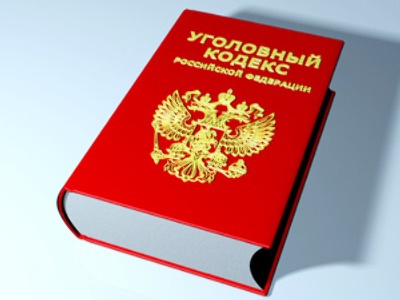It is obvious that the creation of legal norms cannot be carried out only at the purely subjective discretion of specific legislators. The relevant content and the need to adopt legal acts are determined by the really existing complex system of social relations, acting as part of which the legal consciousness reflects and reproduces its specificity and structure at the legal level. In this regard, law also has the form of a certain system.
Russian law: system, branches
These are two fundamental concepts, which is why it is worth starting with their definition. System of law - the so-called unity of legal norms operating within the state, grouped into interconnected industries, which is structured. It expresses the internal unity of law, due to the system of prevailing social relations. Its primary elements - legal requirements - legal norms.
The division of all existing norms (legal) into material ones (they regulate real relationships between people, their associations, for example, by form of ownership, state administration, political and labor activity, etc.) and procedural (they establish a procedure for resolving conflicts, disputes, investigations, judicial review of offenses, it can be said, regulate purely organizational issues) determines the formation of a similar kind of branches of law.
The division of this system into separate parts depends on the sphere of social relations, which is regulated by certain norms (the main criterion for distinguishing individual industries is subject of regulation (legal), additional - regulatory method).

The system of law (branches of law in its entirety) has 3 types:
- Anglo-Saxon (sources of law - a number of judicial procedures, regulatory legal acts; has casuistic features).
- Traditional religious, muslim (legal source - religious dogmas, canons, customs).
- Romano-Germanic (there is a strict systematic approach; the main legal source is the law, a number of legal acts subject to systematization and codification).
Branch of law - an autonomous set of existing legal norms that are part of the structure of its system, which regulates a qualitatively homogeneous image of social relations. One of the criteria for dividing the above system into branches is the distinguishing features of some social relations from others (content, goals, objectives). First of all, all branches of Russian law are distinguished by the subject of regulation (legal). They also have distinctive features:
- special subject, method;
- ability to interact equally with other legal sectors (at the same level);
- quantitative sufficiency of norms;
- specific characteristics of the relevant industry;
- the need of society in regulating the corresponding public sphere directly at a specific level;
- the presence of autonomous most often codified legislation.

The concept of the subject of a branch of law can be interpreted as a qualitatively homogeneous image of social relations, which falls under the influence of the norms of a particular branch of law. It is the main objective basis for the distribution of relevant norms in specific sectors.For example, the rule of law, the subject of which is the relation of the employee and the employer, constitutes a separate industry, and those that regulate social relations in the property sphere form a completely different industry, etc.
It is also acceptable to interpret the concept of the branch of law as the main special component in the legal structure, concentrating to a large extent the qualitative features of the regulation of law. This is the most autonomous component. The concept of the branch of law implies that, within the limits of its subject of regulation, a special legal regime is being formed for the relationship of subjects of legal relations with their participants. It provides integrity in the process of regulating social relations.
So, the system of law, branches of law, its subject are the basic concepts of the issue under consideration.
Typology of branches of law
There is a certain correlation of branches of law. It is important to outline the common boundaries between different groupings of norms, given their close relationship. There are generally accepted types of branches of law, namely:
- Constitutional law is, of course, a leading industry.
- Financial law (its norms are closely interconnected with administrative).
- Administrative law (objects of management - economics, culture, healthcare, law and order, science, education, defense, protection of civil rights, etc.).
- Agricultural law (a normative act is an approximate charter of agricultural cooperatives, charters of collective farms, etc.).
- Land law (the main regulatory act is the Land Code).
- Civil law is the most extensive industry.
- Labor law is a fairly large industry.
- Family law (the Family Code is the main normative act).
- Criminal law (legal framework - Criminal Code).
- Criminal procedure law (legal framework - Code of Criminal Procedure).
- Criminal executive law (the Criminal Executive Code is recognized as a regulatory act).
- Civil Procedure Law (normative act is the Civil Procedure Code).
From the whole list there are: the main branches of law and derivatives. A special place is given to international law (a set of legal norms, principles governing the interconnections that arise between states and other participants in world communication). Its principles are spelled out in the UN Charter and other documents.
With the evolution of civilization, such types of branches of law as the sea, customs and space are also distinguished. In this regard, we can say that the scope legal activity constantly expanding.
Russian Law Branches
In our country, it has a clearly structured system that has its own hierarchy. So, the leading branch of law is constitutional. It defines, consolidates the foundations of human rights, the state system, as well as the procedure for the formation of the relevant bodies of state power, the principles of their work. This is a set of norms that fix the foundations of Russian politics and the social system, the legal status of Russian citizens, their freedom, rights, obligations, the national-state structure of Russia, the system of its state bodies.
The norms of state law establish the required political, economic social basis, state activities in the field of social development and culture, the defense of the Fatherland and foreign policy and regulate the relationship of the individual with the state, determine the system, the procedure for the formation of the judicial, executive, legislative authorities, as well as local self-government, the principles of their activity . State law - a leading industry because of its ability to fix the foundations of the entire public and state organization of the country.
Constitutional law as a branch of law - A special system of its norms that govern a qualitatively homogeneous set of social relations that are formed during the organization and functioning of control exercised by constitutional courts as an autonomous type of legal procedure.It is divided into 2 sub-sectors:
- constitutional litigation;
- constitutional law.
The leading nature of the law in question is the availability of the main source - the Constitution of the state, which contains the basic norms for the remaining industries, where they subsequently find concrete development and implementation. In this regard, we can say that constitutional law as a branch of law is the so-called core of the entire system (legal).
The first level of the Russian legal system
It includes 3 main branches of law:
- Civil law. The subject of regulation is property (personal non-property) relations.
- Administrative law. It regulates the relationship in the field of public administration (between state bodies, between citizens and the state).
- Criminal law. Here, regulation focuses on security-related relationships. public order and social security, as well as protecting the health and lives of citizens. The norms of this right establish the nature of crimes, the amount of punishments.
The above types of branches of law (each) have 2 levels. This is the so-called second and third. They are quite autonomous branches of Russian law. However, they are still considered derivatives of the previously considered (core) ones.
Civil law as a branch of law
It is recognized as the largest, based on the scope of regulation of social relations. Civil law as a branch of law includes determining principles for several of its branches, namely:
- Economic law. The subject of regulation is social interconnections in the field of property and economic turnover. It substantially supplements, concretizes the extensive civil law.
- Land law. The subject of regulation is relations regarding the protection and use of land.
- Customs law. It is aimed at the relationships that are formed in the process of moving goods, vehicles, citizens through the existing customs border.
- Labor law. The subject of regulation is relations arising in the course of labor activity. It could be part of the civilian if the rules that existed in it did not spell out strict requirements regarding compliance with established labor discipline, as well as the strict (administrative) dependence of the employee on the employer.
- Housing law. The subject of its regulation is the social relations that appear in the housing area. Residential buildings belong to the category of real estate, the alienation or acquisition of which also falls under the regulation of civil law.
- Family law. It regulates relations (property, non-property) between spouses, children and parents, the rest of the family.
The decisive role of extensive civil law in relation to other branches is that in a situation where the above types of branches of law will have gaps in the legislation, civil norms will come into play.

Administrative law and a list of related industries
To begin with, it is worth recalling the essence of this legal concept. Administrative law as a branch of law - a set of norms that regulate social relations that appear during the implementation of executive and administrative work of state bodies, as well as establish their structure, competence. It is his norms that govern the activities of governing bodies (cabinet of ministers, governments), federal services, agencies, ministries, and municipal bodies.
Administrative law as a branch of law has similar branches, such as banking, financial, tax law, etc. The objects of these sectors are money. The main difference between them and civil law (in the framework of which the state does not intervene in the work of persons performing property redistribution) is the use of administrative regulation methods. For example, in accordance with the rules of financial law, it is the state that sets the size of the budget, as well as distributes it.
Criminal Law: Second Level
This is a branch of law, its rules determine which of the acts are crimes, as well as what penalties are laid for their commission.This right establishes the grounds for the corresponding criminal liability, the nature, extent and purpose of the punishment, the conditions for its implementation in relation to criminals.
Its second level is criminal executive law, which regulates, through the existing norms, the interconnections associated with justice in specific criminal cases, and determines the procedure for criminals to serve their criminal sentences.

The third level of the considered branches of law
It includes the following branches of procedural law:
- criminal procedure;
- arbitration and civil;
- administrative procedure.
These industries regulate the established procedure for legal proceedings in administrative, criminal and civil cases.
Private and public law: definition, branches
The first is an ordered set of norms that ensure the private interest of individual individuals, groups that protect and regulate the relationship between private individuals. Depending on the subject of regulation, there are various branches of private law.
The second is the norms that protect the public interest, the common good. It is interconnected with various kinds of powers, organizational and power work of state bodies. This right fixes the established order of bodies of state power and state administration.
Private law sectors, which are designed to ensure the existing interests of individual organizations and citizens, are as follows:
- civil law;
- housing;
- labor;
- family, etc.
Public Law Branch - constitutional.

Systematization of legislation: concept, forms
Categories such as "legal system"And"legal system"Close enough. Sometimes they are even identified. However, they still do not match the content criteria. The latter is a broader concept. For example, criminal law is a complex of a number of regulatory legal acts that regulate social relations within the competence of criminal law. Here, criminal law itself encompasses both criminal law and criminal law relationships. In addition, it acts as a branch of scientific knowledge (theoretical, academic discipline).
In that situation, if the legal system is represented by the totality of its branches, then legal system - This is an ordered set of their sources (official state documents, within the framework of which relevant legal norms are fixed, which are intended to regulate social relations in one of the branches of law). For the purposes of streamlining and improving the rule of law, the state carries out their systematization, as a result of which the use of the concept of a system of legislation becomes obvious.
The following forms of the category are considered:
1. Codification - the special activity of law-making state bodies in the sphere of streamlining, adjusting, processing existing legislation in a certain area of social relations for the formation of a new single, logically consistent normative act (consolidated). As a rule, 3 of its types are distinguished:
- legislative framework;
- charters;
- codes
The latter species is considered the most common (GK, SK, UK, etc.). Codified acts aim at the continued regulation of social relations. And their adoption is a step forward in the evolution of legislation.
2. Incorporation - consolidation of existing regulations into relevant assemblies through their reproduction (without processing). It happens:
- systematic (for example, normative acts adopted within a month are combined into collections on a specific subject basis - branches of law);
- chronological (regulations are grouped in collections based on their time of adoption).
Incorporation can also be unofficial (external processing of the current legislation to create collections, directories, intended for a specific category of specialists who work in the enterprise, organization, institution; they cannot be referenced in the course of law-making, application of law) and official.
Sometimes isolated and consolidation as a form of systematization of legislation. It can be interpreted as a grouping of a number of regulatory legal acts that operate within the same sphere of social relations into a single (general) consolidated act without any change in content.
The consolidation in form is close to incorporation (systematic), since there are no innovations in the regulation of social relations, however, in its essence, it is similar to codification due to the fact that the consolidated act acts as a consolidated normative. Most often, this form is used in places where there is no need or possibility of codification.
All branches of law are equipped with their own system of legislation (sources of law). The concept under consideration is also delimited by the legislative branches, namely:
- Industry. This legislation includes the norms of only the first branch of law. For example, labor law consists of exclusively labor law.
- Intrasectoral. It contains the norms of only a specific part of the industry. For example, in civil law one can distinguish such legislation as copyright, on entrepreneurship, and others, which act as intra-industry legislation in view of the fact that they regulate individual spheres of civil law relationships.
- Integrated. It is quite rare and consists of a set of norms that apply to several industries at once, but are included in an independent industry. For example, military legislation includes part of the norms of administrative law, and part - of other industries.
So, the branch of legislation may coincide in form with the branch of law, but its content is narrower.
Conclusion
Thus, it is worth noting that all Russian branches of law are closely interconnected and, moreover, are imbued with a special organic unity, but they are not at all equivalent, based on criteria such as significance, scope, role in the procedure for influencing social interconnections, because different areas of these relations are not at all identical in latitude or composition.
